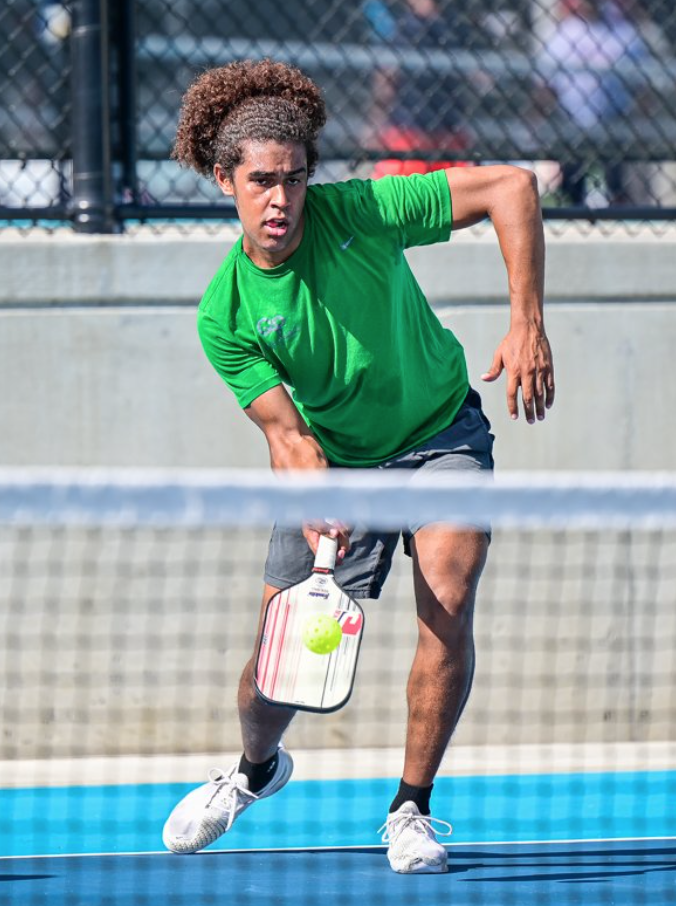Tips to Improve Your 3rd Shot Drop in Pickleball
Even if you hate practicing, there is one shot in pickleball that you would do well to practice and become extremely good at taking. That shot is the third shot. And one of the best options for your third shot is the third shot drop. If you want to become a better or more advanced player, you must master this shot.
This article discusses tips on how to improve your third shot drop in pickleball.
Figure out what the opponent wants and doesn’t want
The best balls to hit come in chest or paddle-high, giving us enough time to put some force behind the shot. We can direct it wherever we want and easily get it over the net. This means that these are the shots we do not want to give to our opponents. Too often, on third shots, players (especially lower-level players) hit the ball in a way that gives an opponent too easy of a shot.
A good third shot drop is one that forces your opponent to hit up on the ball–which can lead to them hitting the ball into the net or popping it up to you. At worst, it puts them in a tough position where their only choice is to dink it over the net for you to volley easily. So on your third shot drop, you should aim to hit a ball slow enough and low enough that it descends as it reaches your opponent.
Forcing your opponent to hit up on the ball should be your primary goal with a third shot drop. To do this well, you need to control two things–the height of the ball and the speed of the ball.
Control ball height
It might be helpful to think of the target of your shot to be no more than 1-1.5 paddle heights over the net. This helps you aim for a window for the height of the ball.
Control ball speed
But hitting this window doesn’t mean it’s a good third shot drop. The ball also needs to be traveling slow enough that it drops before getting to your opponent’s paddle when it passes through this window.
How to Control Your Third Shot Drop
This is all well and good to talk through, but how do you actually do it?
Make short/compact backswings to reduce speed
A compact backswing with a forward impact point and stable paddle face make it much easier to keep the ball’s speed under control.
A solid, balanced setup
Of course, controlling the above variables is easier if you start with a solid, balanced setup. Your knees should be slightly bent, and your footwork should take you to the position you need to be in before the ball ever gets to you. This helps ensure that you aren’t reaching backward or to the side to hit the ball. Instead, it’s in front of you, and you are able to perform all the actions necessary for solid contact.
Hit the ball crosscourt
Ever wonder why the pros hit so many balls crosscourt? When you hit the ball straight (unless you’re in the middle of the court), you hit the ball over the highest part of the net. The middle of the net is about two inches lower than the rest of the net. So, by hitting it crosscourt, you are aiming for the lowest part of the net, which allows you a better chance of clearing it and having it drop before reaching your opponent.
After the Third Shot Drop
Once the third shot is completed, you must live with whatever happened. If it’s a successful drop, then it’s generally safe to move forward to your NVZ line since your opponents can’t hit the ball hard without hitting it out of play. If the drop is net high or above, then the players might do better staying back in anticipation of playing something fast.
If it’s your partner who hit the third shot, you should assess the quality of that shot before advancing. It’s not often we’ll tell you to wait and watch, but this is a case where it may make sense to see how your opponents react rather than automatically moving forward to the NVZ line. The last thing you want to do is advance and get a drive shot back that forces you to react while out of position. If it’s a good drop, go ahead and get up at the kitchen.
If your partner consistently hits good third shot drops, you can advance quickly, which will allow you to put pressure on your opponents sooner. Of course, to do this, you need to have a lot of trust in your partner.
Conclusion
Third shot drops are not offensive shots. Trying to score on them is typically a mistake. Instead, they are neutralizing balls that allow you and your partner to get in a good position at the kitchen and be ready to volley the ball and wait for a good spot to score. Make sure your focus is to force your opponent to hit the ball up, limiting their chances to try and score on the return.
Check out Selkirk TV and their video here to see these tips in action.






